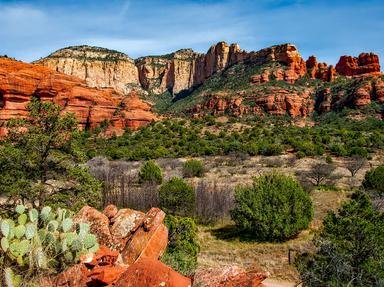Quiz Answer Key and Fun Facts
1. Phoenix is located in south-central Arizona in the western part of the United States. Which of the following would be Phoenix's coordinates?
2. A phoenix is a legendary mythical bird that flew out of the ashes of a fire. How did Phoenix, Arizona get its name?
3. The modern history of Phoenix started in 1867 when a local from nearby Wickenburg rested his horses at the foot of the White Tank Mountains at the western edge of what is now Phoenix. He saw the whole flat valley before him as land suitable for agriculture. What in particular did he *NOT* see?
4. Phoenix's economy up until WWII was based on agriculture and natural resources. The mainstays of this production were cotton, cattle, citrus and _____?
5. When did Phoenix become the state capital of Arizona?
6. Many of the Arizona's other large cities are clustered around Phoenix. Which large Arizona city is not?
7. All state capitals except four are connected to at least one Interstate freeway. Which Interstate(s) are connected to Phoenix?
8. Phoenix International Airport, situated less than five miles from downtown, has a unique name. What is it?
9. Phoenix is a major sporting centre with most major league sports covered. Which one of the following is *NOT* true?
10. Phoenix has a hot desert climate but the city has turned what most would see as a negative into a positive. What moniker has the Phoenix metropolitan area adopted that reflects its hot climate and promotes growth and tourism?
Source: Author
1nn1
This quiz was reviewed by FunTrivia editor
agony before going online.
Any errors found in FunTrivia content are routinely corrected through our feedback system.
